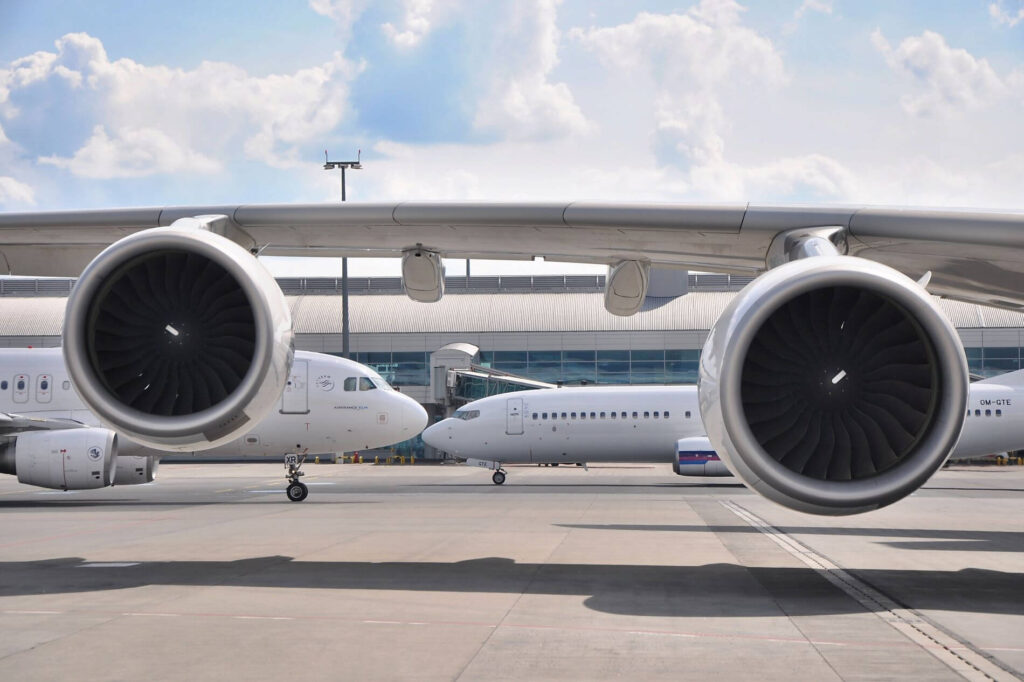It takes years to develop a modern aircraft. But which one of the two giants – Boeing and Airbus – manages to do it faster?
Theoretically, it is not difficult to calculate the time it took to develop a particular model of aircraft. All we have to do is measure how many years, months or days were spent between the two points: when a particular airplane went into development and when its first production unit was delivered to the first customer.
The chart below shows how many years particular aircraft spent in the development cycle, including several significant checkpoints: the official launch of the program (often coupled with the first official order) and the first flight of the prototype. The most popular models are shown here, including significant modifications that often come with their respective generations. Aircraft, developed by other companies, but sold by Boeing or Airbus (such as the Boeing 717 and the Airbus A220) are excluded, as are modifications of particular base model (such as the Boeing 737 MAX 9 or the Airbus A321 – derivatives of the 737 MAX 8 and the A320 respectively).
There are several outliers here, such as the Boeing 777: it began its life as a trijet program in the late 70s, before being shelved for some time and reemerging as a twinjet in the early 90s.
Long development times of the Airbus A310 and the A330 also could be noted: those aircraft were developed as variants of the original A300, before acquiring the life of their own long after the initial model started flying. The A320 falls into that category too – its program had a long and wavy path between the first ideas in the early 70s and the official launch in 1984.
Nevertheless, we can outline an average development time. Unsurprisingly, Airbus aircraft spend way more time on the drawing board.
But there are many caveats to that. First, it is not easy to pinpoint the exact start of the development of some airplanes. Models often go through a myriad of changes between the first appearance on the drawing board and the first takeoff, and sometimes – even after that. The Boeing 777 that took off in 1994 was an entirely different plane at the start of its development, sharing, besides the name, very little with the original design. Can we really say that the development took a long time if it actually went through several distinct stages?
Nowhere it is as apparent as in case of Airbus. Many of its planes were based on some or another variant of the A300. As the success of the first model became apparent, those variants were stretched, reengined and otherwise overhauled. The A330neo had its share of transformations too. Proposed as an answer to the Boeing 787 in 2004, it was shelved in favor of the A350, and reborn with many different features in 2017. Did its development really take that long or was it something completely else?
In this light, we should not trust the start of the development that much. The program launch is often complicated too. Sometimes it indicates the date when the manufacturer starts selling yet-unfinished aircraft to airlines. But more often than not, airlines are involved in the development from the beginning, making the launch just a formality, not indicative of the actual state of the program.
If we want a concrete checkpoint, we should look at the first flight: an aircraft has to be finished before it flies. Actually, it has to be finished even before that, and the rollout – the first showcasing of a compleated aircraft to the public – usually signifies that date. Ground testing follows, then the maiden flight, then the flight testing.
After that, an aircraft has to be certified by respective aviation authority, the Federal Aviation Administration (FAA) in the United States or the European Aviation Safety Agency (EASA) in Europe, whichever comes first. After that, the aircraft is finished and gets delivered to the launch customer, usually within a month or two.
This timeline is a lot more concrete and shows arguably the most difficult period of the development. So, how long does it take for Boeing and Airbus?
Several outliers can be seen here too. The Boeing 787, which had a lot of development problems in the early stage, and the Boeing 707, which took over four years between the first flight of Dash 80 prototype and the certification of the final production model.
These outliers are not the only ones that drag Boeing statistics down. The American company takes quite a long time to fly their prototypes and even longer to certify them.
Airbus spends more time before delivering certified aircraft to the first customer though, a process that may be impacted by their complicated international assembly lines.
Overall, it is clear that the European manufacturer likes to take its time to develop aircraft, but moves through testing and certification processes faster. Boeing, on the other hand, is less consistent between the models, but on average develops their airplanes faster, while spending more time on the processes after the first rollout. Those changes correlate with the differences between design philosophies of both companies, making each of them unique in their own right.

